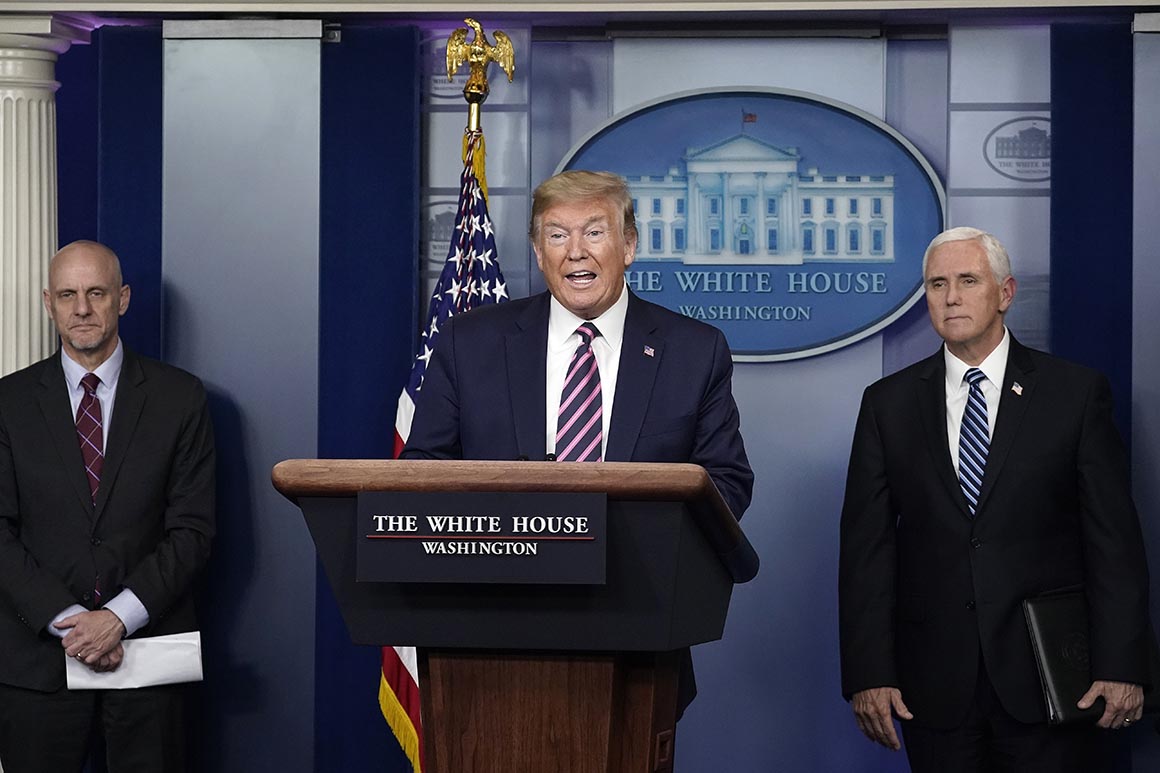
One solution Trump’s team has considered to remove his temptation to pop by the late afternoon news conferences is to get him out of the White House and into other settings where he can tout the administration’s response to Covid-19 and put Americans at ease amid concerns about the risks of reopening the economy without a proper vaccine.
Trump has only left the executive complex twice since early March and has been eyeing Pence’s recent trips to manufacturing facilities and a commencement ceremony with envy, according to one of the people familiar with the president’s thinking. Administration officials are currently exploring opportunities for the president to resume travel while taking public safety recommendations into account.
Such trips would likely resemble those the president made at the beginning of the coronavirus crisis, when he toured the Center for Disease Control and Prevention headquarters in Atlanta and a vaccine research laboratory in Maryland. A second senior administration official suggested the president might visit small businesses that received loans through the Paycheck Protection Program, part of the $2 trillion stimulus package he signed into law in late March.
Those who believe the president should ditch the briefing room and find other ways to connect with voters claim their top priority is to protect his image as the November election closes in and the reality of a prolonged economic catastrophe disrupts the primary argument he long planned to deliver on the campaign trail.
Moreover, they are worried that each dubious claim and about-face provides yet another soundbite waiting to appear in Democratic attack ads this fall. Last month, for instance, Trump said he was eager to get Americans back to work by Easter — an eyebrow-raising comment that Pence later claimed was “aspirational” in nature. This week, Pence said he hoped the coronavirus would be “largely in the past” by early summer, pushing the timeline back even further.
“I am worried about overexposure, yes,” said a person close to Trump. “Bickering with the media for two hours on live television does nothing to help Americans who are struggling right now and want to know how and when their lives will return to normal.”
In a Gallup poll released Thursday, prior to Trump’s comments about household cleaning products treating Covid-19, 68 percent of respondents said they had a “great deal” or “fair amount” of trust in their state’s governor to handle economic matters. Only 47 percent said the same of the president, who confused some governors when he slammed Georgia Gov. Brian Kemp earlier this week for his plan to begin reopening restaurants, tattoo parlors and other businesses in the near future.
“I think it’s too soon,” Trump said on Wednesday, adding a day later that he wants Georgia to “open as soon as possible… but I was not happy with Brian Kemp. I will tell you that.”
The rising number of jobless claims — 4.4 million more Americans applied for unemployment benefits last week, totaling 26.5 million during the crisis — combined with the president’s meandering appearances from the briefing room each evening has already had a toxic impact on his position in key battleground states.
Trump, whose approval rating has slid back down to the low 40s in recent weeks, has fallen behind Biden in Michigan, Pennsylvania and Wisconsin, according to a handful of polls released this month. A Fox News survey on Friday also showed the president trailing his likely Democratic challenger by 3 percentage points in Florida — a state that Trump campaign officials have previously claimed they have a firm grip on — though Biden’s lead was within the poll’s margin of error.
“Because of the coronavirus situation and the focus on Trump as he does his daily news conferences, these numbers reflect what we don’t want this race to be, which is a referendum on Donald Trump,” said veteran Republican pollster Neil Newhouse in response to the Fox News poll results.
Still, there is no guarantee Trump will commit to making fewer cameos alongside task force members in the coming weeks — even after he cut the briefing short on Friday. After some White House allies publicly suggested in early April that the president should do less talking during the briefings, Trump left early a couple of times and kept his remarks short in other appearances.
But after Easter weekend, the briefings once again grew longer with Trump’s consistent involvement. It didn’t help, one administration official said, Pence encouraged the president to continue participating — viewing the ratings bonanza his appearances elicited as a positive development.
Adam Cancryn contributed to this report.
Source: politico.com
See more here: news365.stream






